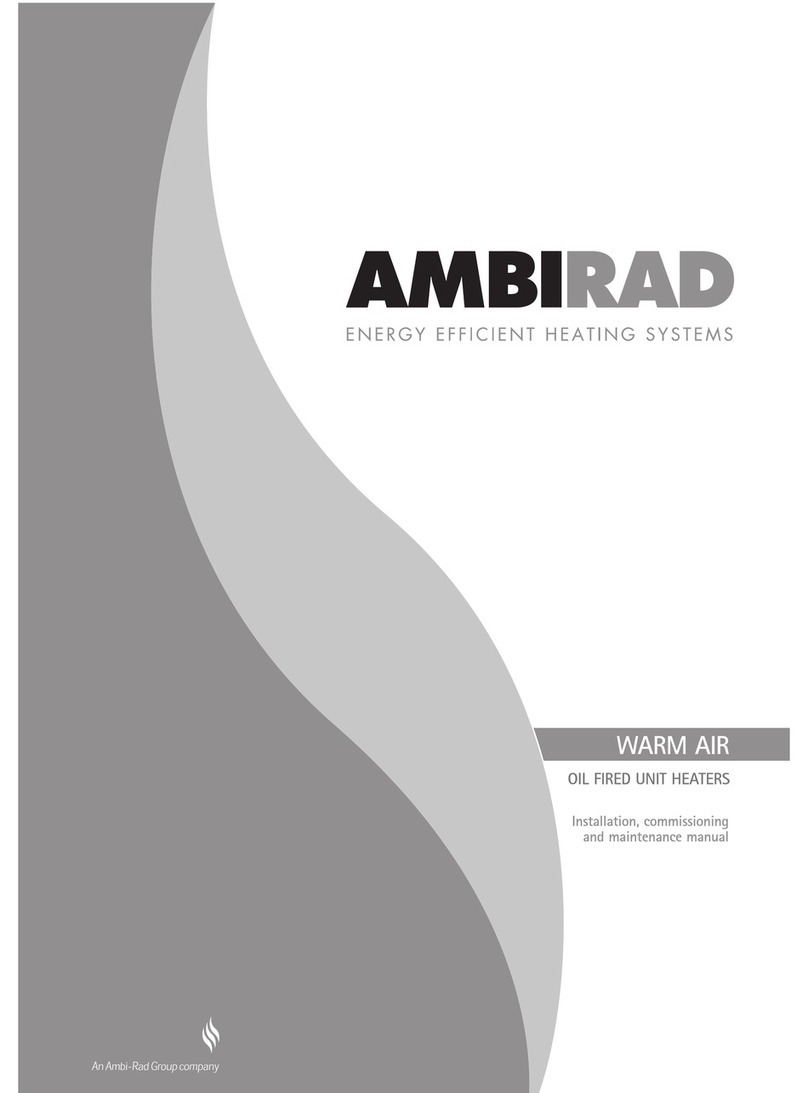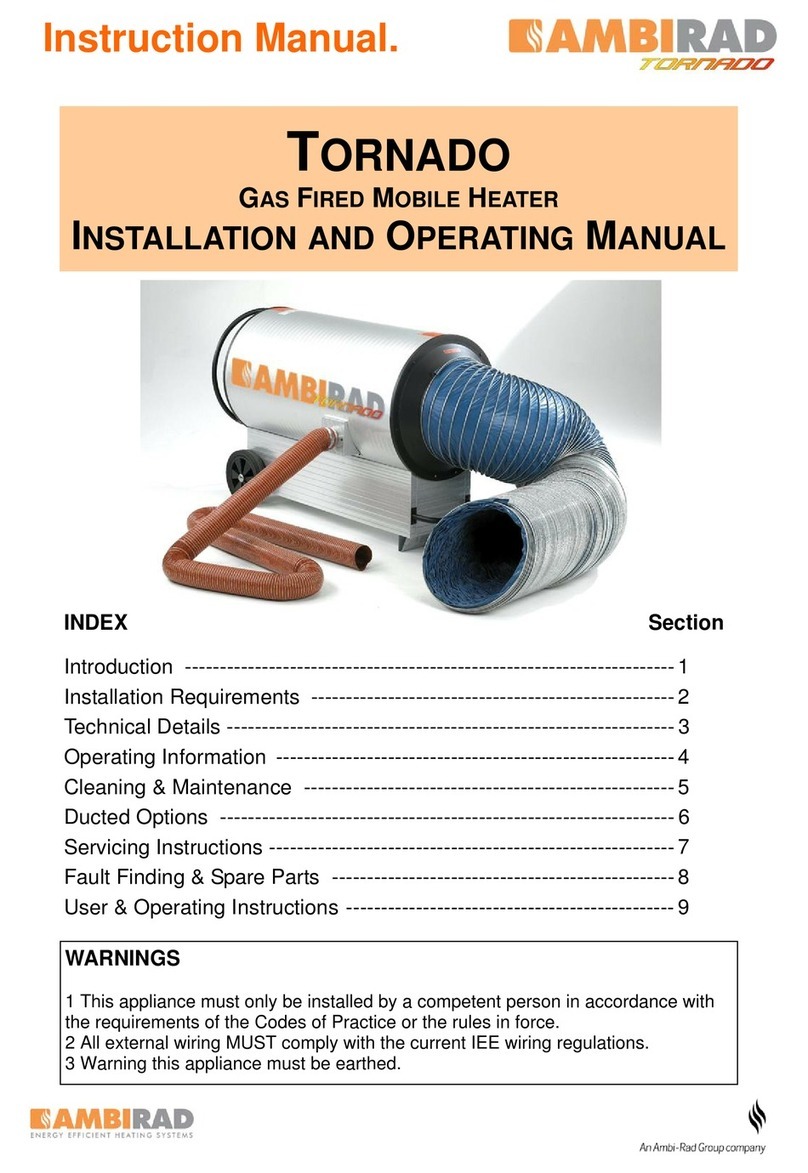Ambirad Vision VPLUS HL120V Instruction manual
Other Ambirad Heater manuals
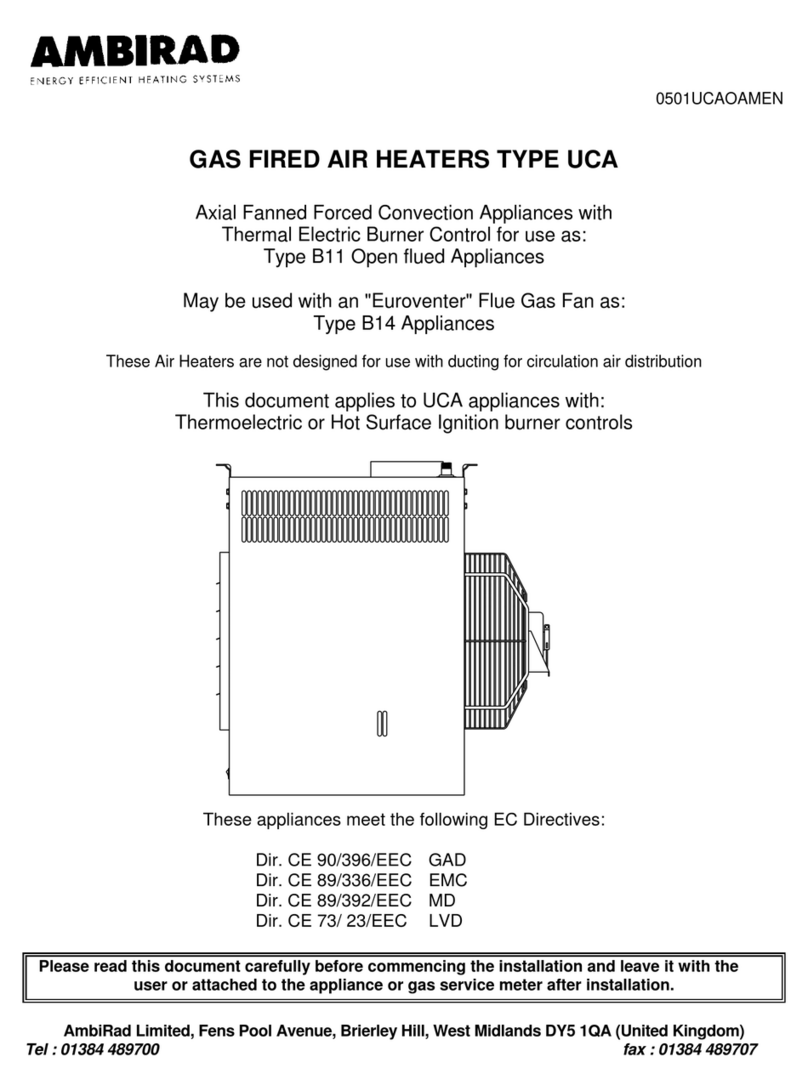
Ambirad
Ambirad UCA 25 User manual
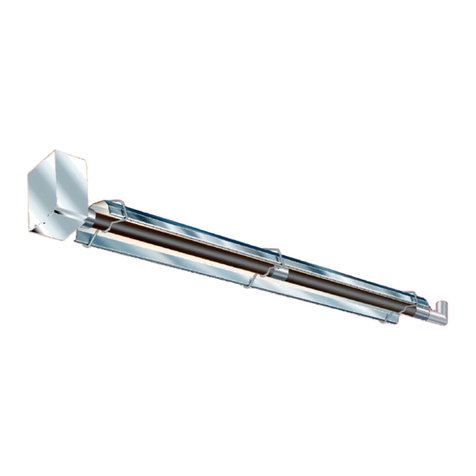
Ambirad
Ambirad Vision Series Owner's manual

Ambirad
Ambirad Vision Range VSXUS User manual
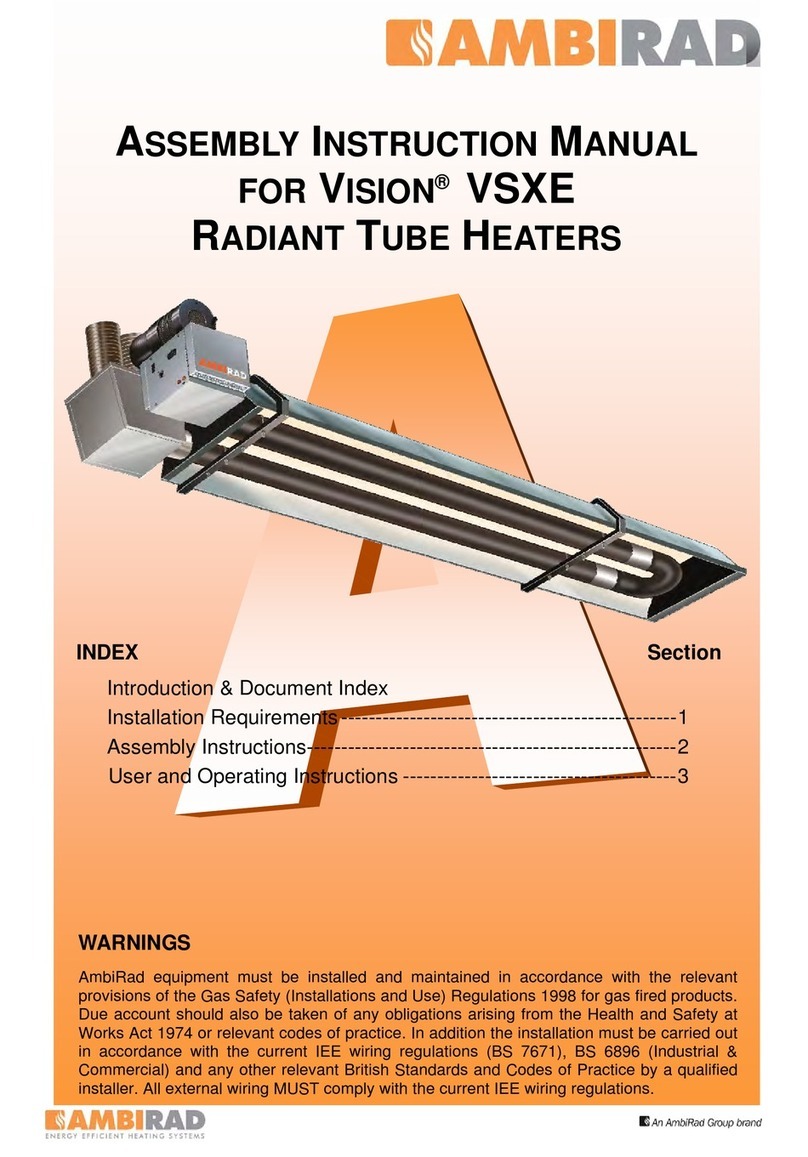
Ambirad
Ambirad VISION VSXE20UT Installation guide
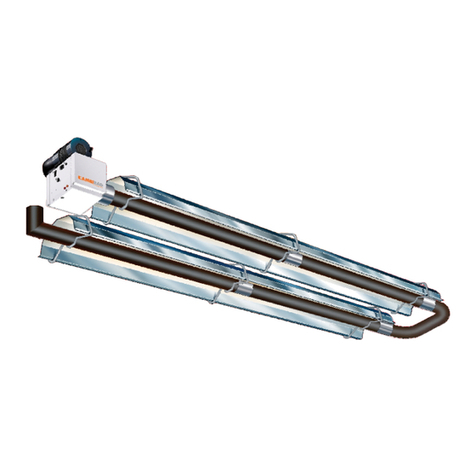
Ambirad
Ambirad VPlus40 User manual

Ambirad
Ambirad Vision VSX User manual
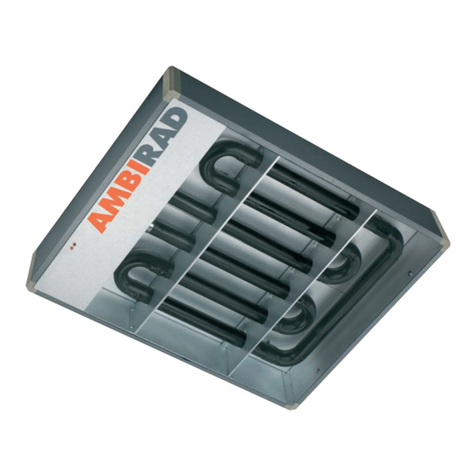
Ambirad
Ambirad VISION COMPACT VC40 Installation guide
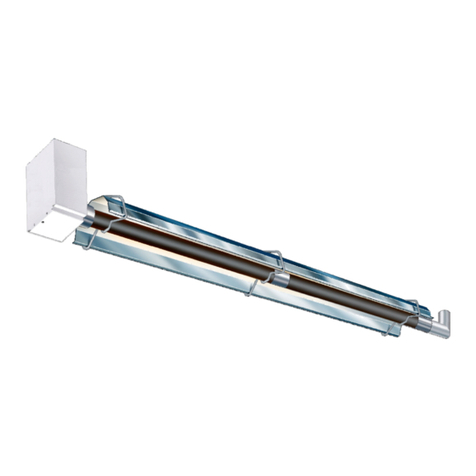
Ambirad
Ambirad VCLUS 40-S10 User manual

Ambirad
Ambirad Vision VS User guide
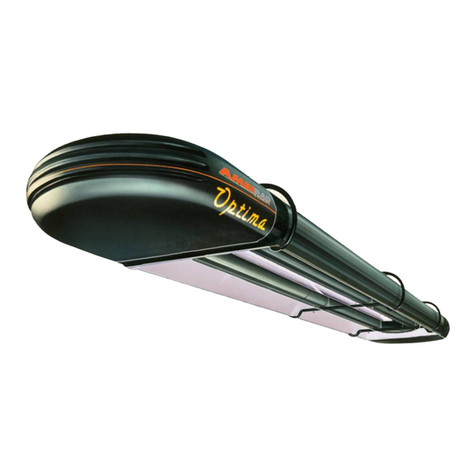
Ambirad
Ambirad VISION VSO Assembly instructions
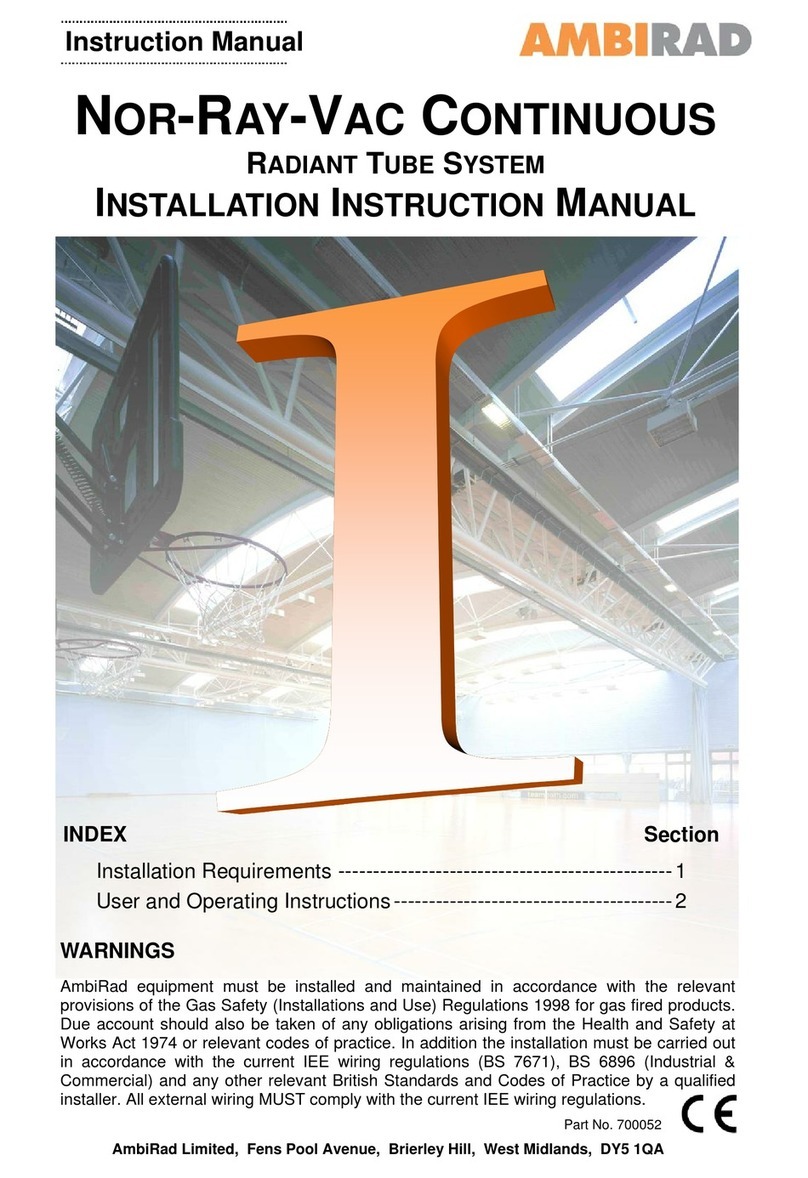
Ambirad
Ambirad NRV12LR Service manual
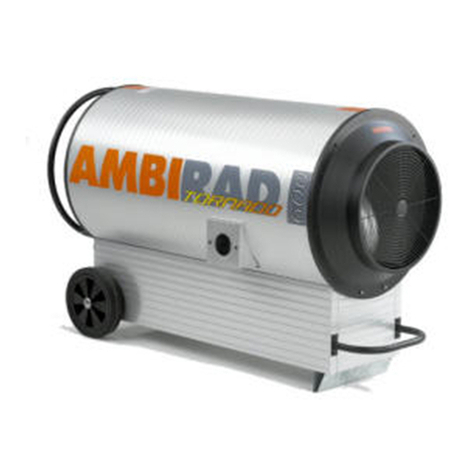
Ambirad
Ambirad Tornado 600 Installation guide
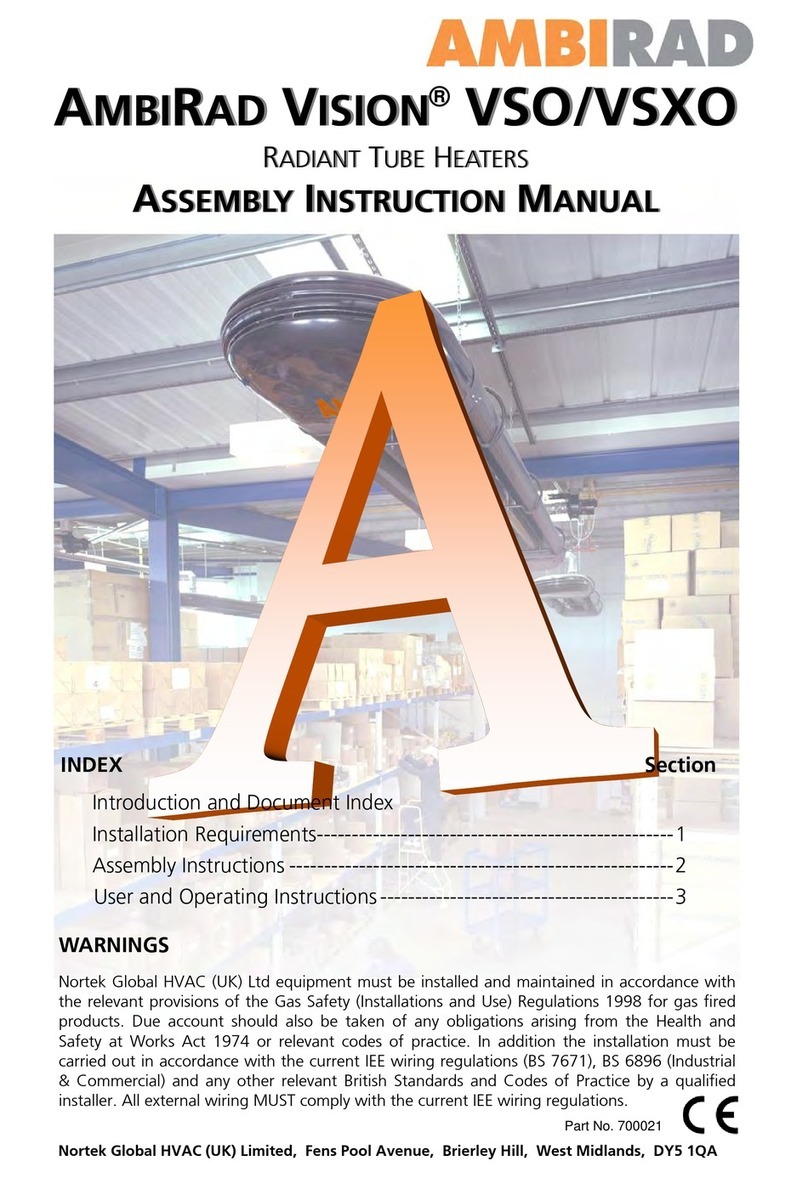
Ambirad
Ambirad Vision VSO Series Installation guide
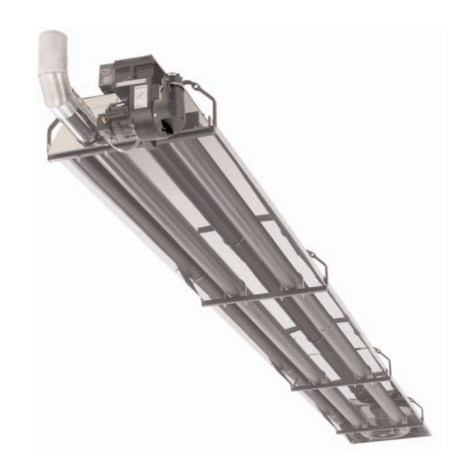
Ambirad
Ambirad ARO Series User manual

Ambirad
Ambirad VPlus40 User manual

Ambirad
Ambirad Vision Series User manual
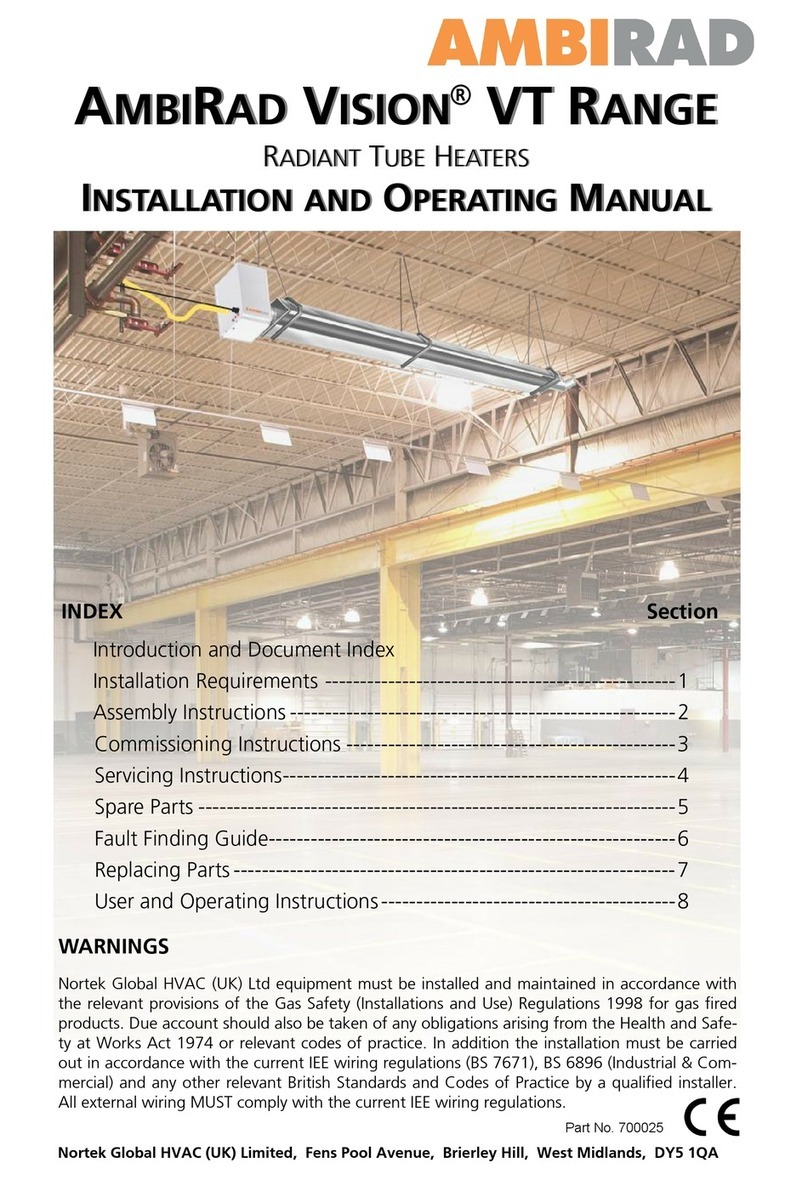
Ambirad
Ambirad VISION VT Series User manual
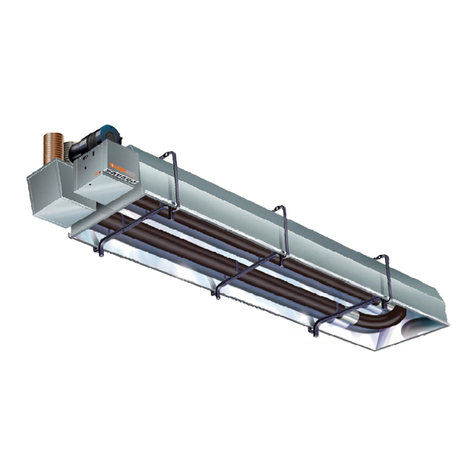
Ambirad
Ambirad Vision VSXUS 90 Datasheet

Ambirad
Ambirad VSUS User manual
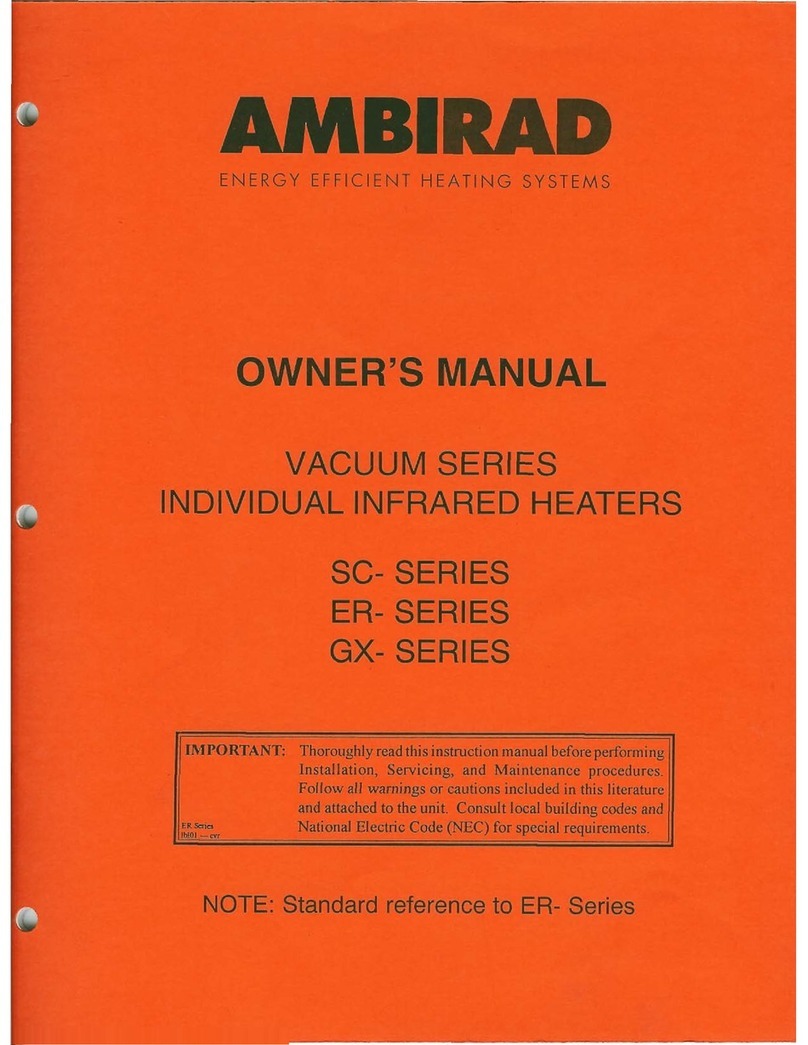
Ambirad
Ambirad Scorpio SC 12 User manual
Popular Heater manuals by other brands

Porter-Cable
Porter-Cable PCXH80KT Operating instructions and owner's manual

Dyna-Glo
Dyna-Glo RA18LPDG user manual

Dimplex
Dimplex PLX050E instruction manual

EOS
EOS Herkules XL S120 installation instructions

Trebs
Trebs Comfortheat 99209 manual

Biddle
Biddle STYLE2 Series Installation operation & maintenance

Vermont Castings
Vermont Castings Non-Catalytic Convection Heater 2477CE Installation and operating manual

Fagor
Fagor RA-1505 Instructions for use

THERMAL FLOW
THERMAL FLOW Delta 175 Operating instructions manual

GET
GET G2CH instructions

ApenGroup
ApenGroup PK Series User, installation, and maintenance manual

oventrop
oventrop Regucor Series quick start guide

Blaze King
Blaze King CLARITY CL2118.IPI.1 Operation & installation manual

ELMEKO
ELMEKO ML 150 Installation and operating manual

BN Thermic
BN Thermic 830T instructions

KING
KING K Series Installation, operation & maintenance instructions

Empire Comfort Systems
Empire Comfort Systems RH-50-5 Installation instructions and owner's manual

Well Straler
Well Straler RC-16B user guide

